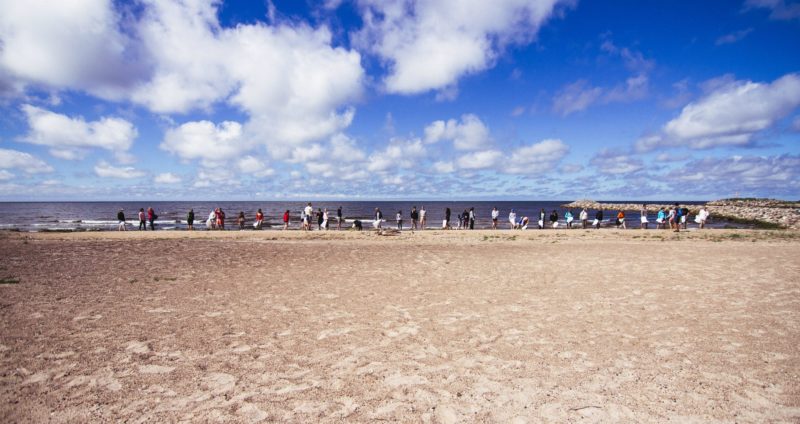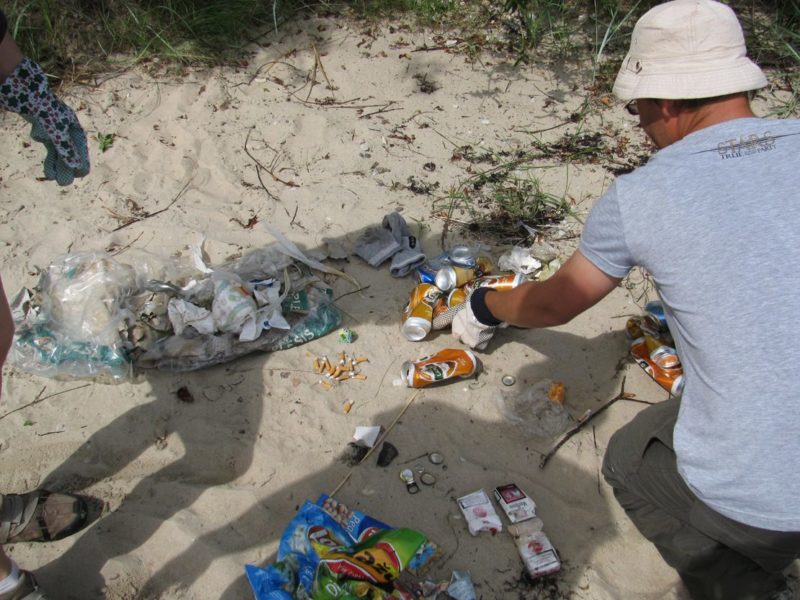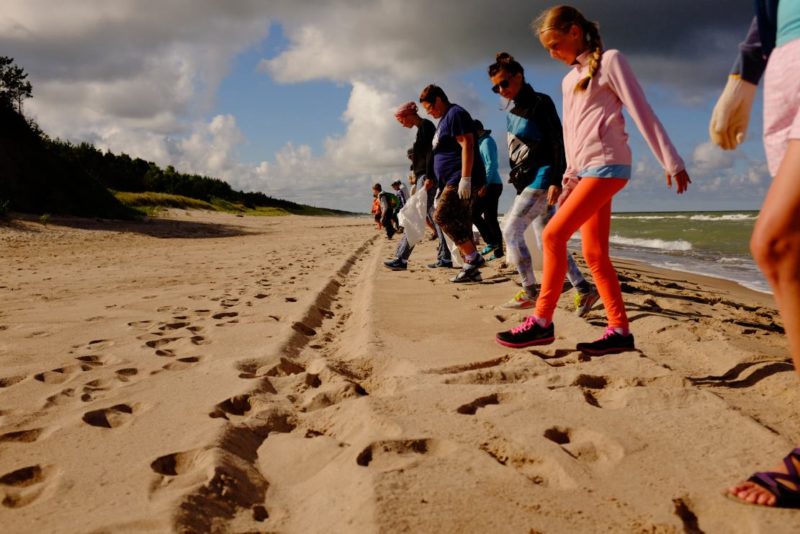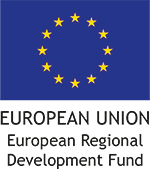
It was early morning of late June, year 2012, when on the Latvian-Lithuanian border group of people met, most of them strangers apart from slightly scared FEE Latvia office team, and begun the first My Sea campaign expedition – 500 kilometers of Latvian Baltic Sea coast from Lithuanian to Estonian border. Expedition marked the beginning of campaign My Sea, inspired by the NGO cooperation project MARLIN and set-up by FEE Latvia as an effort to fill the data availability gaps regarding marine litter found on Latvian beaches and turn public attention to the marine litter topic that was then still out of broader focus, perceived only as a nuisance for recreation, not the acute environmental issue.
Initially the campaign was planned to be as one-time project linked activity – giving organisers so necessary data and snap-shot understanding about amounts of litter found on Latvian beaches, calling for action municipal and national stakeholdes, and inviting broader public to look more subtly to the issues of marine litter and intertwined environmental and economic challenges it created. Why the first morning was meeting of strangers? Because everybody was invited to join in and experience by himself both the beauty of the Latvian coast and challenges that it faces – particularly, but not limited to, marine litter.
Quite early during the first expedition it became clear for organisers that the initiative must not and will not remain as “once in a lifetime” event, despite mass of depressing practicalities that since then needed to be arranged for such an adventure. People joined in and brought enthusiasm. People went away with changed knowledge and understanding about marine litter and other issues that Baltic Sea and unique Latvian coastline of the Baltic Sea (500 kilometers of mostly sandy beaches) faces. Also the campaign data helped to establish valuable data line and provided thousands of ideas for further work and possible solutions that needed the follow up. So the work was carried on next year. And then next and so on.
Year 2016 marked 5th anniversary of campaign, when more than 800 people took part in campaigns expedition alone, not counting side events and other public initiatives that were developed through the years. But public numbers and campaigns results recognition – starting from National Environmental Science award in 2012 for FEE Latvia, when campaign was just set up and ending with recent honours of receiving Annual Health Award in 2016 for promotion of solutions for healthy Baltic Sea ecosystems – is just the tip of iceberg of campaigns commitment to become driving force in seeking solutions for the marine litter issue in Latvia – starting from very local situations to national processes.

In 2012 network of 40 monitoring/survey sites was created along all the coast of Latvian Baltic Sea border, with surveys done according to UNEP/IOC guidelines and methodology. It is now complemented with 12 seasonal survey sites. Such amount and diversity of monitored sites allowed during these years to compile very valuable amount of information, giving clear knowledge not only about situation important for policy making on national level (as average amount of litter found on beaches, structure of materials, distribution and trends), but also very down-to-earth picture about situation, challenges and possible reasons and solutions for marine litter pollution issues in each of 17 coastal municipalities in Latvia.
Data line now compiles results of over than 200 marine litter surveys. Parallelly to the “usual” UNEP/IOC data, marine litter research part of campaign was complemented by range of different additional surveys and research. In 2014 to verify that data from selected monitoring sites correspond to general situation of coastline, campaign mapped all the entries to the beach that represented anthropogenic activity, measuring waste load and pressure there. All together more than 1500 access points were mapped by GPS, confirming that data from survey sites can be used to describe broader situation than stretch of 100 metres according to UNEP/IOC.
In 2016, when gathering data in survey sites, also litter items sized 0.5-2.5 cm were counted, giving at least initial deeper understanding about litter amount that is escaping representation in official beach litter statistics according to UNEP/IOC protocols. Similarly in all the survey sites one of the “litter plague” of beaches – cigarette butts – were counted for all the stretch of site to analyse how the total amount represents 10 m stretch, where in UNEP/IOC that litter fraction is taken into account. That was done as an effort to continue work on integration and improvements of different beach litter survey methodologies, so that they better help local and national policy makers to choose right instruments for tackling the issue.
Judging from results of five years research work in Latvia it is not surprising – as situation all around the globe shows the similar trends – that the main challenge for Latvian coast regarding marine litter turnes out to be plastic materials. If the average amount of litter found on the Latvian beaches over last five years accounts to be slightly over 170 items per 100 metres, the plastic constitutes more than half of all litter. Even more alarming is the fact that, if those data is expressed as the distribution percentage of litter fractions among all the surveys – during more than 200 surveys made on Latvian beaches over five years, even most remote ones – there are none, where the unidentifiable plastic materials (PL24 category according to UNEP/IOC protocol) in different stages of degradation have not been found. This sad conclusion puts additional importance to the projects like BLASTIC that seeks for solutions in plastic cycle.
Campaigns data now have become a backbone of emerging national policies regarding marine litter. Already in 2014 FEE Latvia have invested necessary amount of work to create a marine litter profile for each of coastal municipalities, ensured the issue to be taken up and seriously considered within Coastal Spatial Planning process for next programming period. Efforts continued, when government intensified work on plans and strategies for implementation of EU Marine Strategy Framework Directive. My Sea data was used to set up national strategy for MSFD Descriptor 10 for reaching Good Environmental Status both as statistical reference to the amount of marine litter and also in setting the goals for National Programme. Marine litter continues its rise in scientific and political agendas, emphasising the urgent need for solutions.
Oftenly those solutions are to be found at very local level. Therefore, at the beginning of July 2017 again the group of people will meet on the Latvian – Lithuanian border in small village of Nida to start the campaigns Green expedition. Month later the farewell pics will be made on Latvian – Estonian border with much more tanned and friendly group of people.
As always – everybody is invited to join in. At least for a day.

Additional information:
www.facebook.com/tirajuravieno
www.manajura.lv

